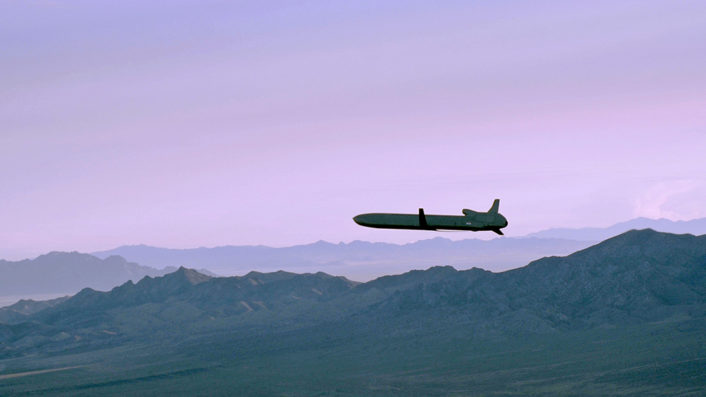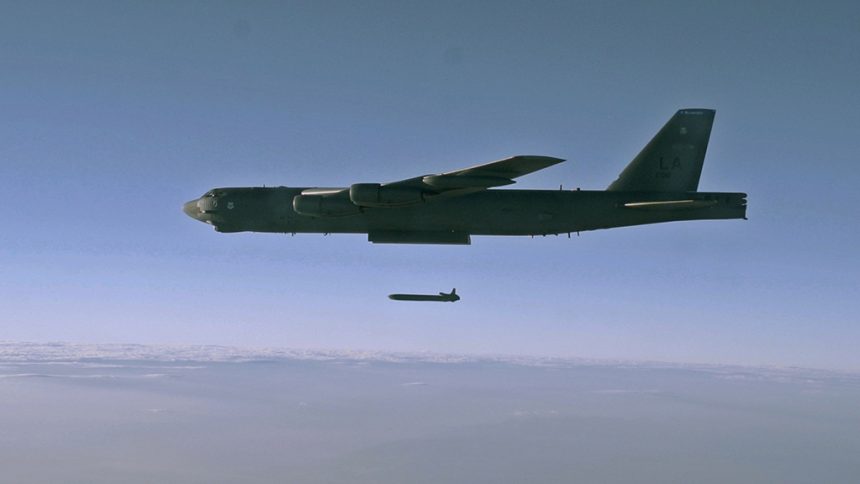The AGM-86B nuclear-capable air-launched cruise missile was tested by the Air Force Global Strike Command’s 2nd Bomb Wing and Air Combat Command’s 49th Test and Evaluation Squadron recently.
The U.S. Air Force tested the ability of its strategic bomber force to configure, load, fly and deliver an unarmed version of the AGM-86B nuclear-capable air-launched cruise missile.
The AGM-86B is a standoff weapon designed to be launched from outside of a combat area, allowing aircrews to accurately strike distant targets without exposing themselves to enemy fire.
Powered by a turbofan jet engine that propels it at sustained subsonic speeds, the relatively small missile deploys wings, tail surfaces and engine inlet after launch.
It’s able to fly complicated routes to a target through use of a terrain contour-matching guidance system. The AGM-86C/D CALCM (Conventional Air Launched Cruise Missiles), that carries a conventional blast/fragmentation payload instead of nuclear payload, uses an onboard Global Positioning System coupled with its INS (inertial navigation system) to fly.
B-52H bombers carry six AGM-86B/C/D missiles on each of two externally mounted pylons and eight internally on a rotary launcher, giving the B-52H a maximum capacity of 20 missiles per aircraft.

As part of the Nuclear Weapon Systems Evaluation Program, or NucWSEP, “a stockpile-to-target evaluation of a nuclear weapon system designed to provide U.S. Strategic Command valuable data used in deciding stockpile requirements and for operational planning” the U.S. Air Force launched the long-range standoff weapon from a B-52 bomber.
To make it simple, in order to validate that the U.S. deterrence force is safe, secure and reliable round-the-clock, the Air Force Global Strike Command conducts periodic evaluations where 49th TES (Test and Evaluation Squadron) personnel and front-line unit perform an end-to-end assessment of the bomber force weapon delivery capabilities.
The process to conduct such a weapons test takes months
“After the 2nd BW was selected to perform the NucWSEP, 2nd Munitions Squadron Airmen got to work. A primary and back-up missile were randomly selected from the stockpile and checked to ensure that all test requirements were up-to-date,” , says an Air Force release.
“Once the missiles had been validated, they were loaded onto a Common Strategic Rotary Launcher and prepared for the mission. The 49th TES then installed instrumentation equipment into both the primary and secondary missiles.”
“After all the items were installed and the tests completed, the launchers were loaded onto two B-52 Stratofortresses by a certified weapons load team. After takeoff, the aircrew flew the B-52 to the Utah Test and Training Range and launched the weapon, striking the target.”
So, along with contributing to drug-interdiction operations acting as NTISR (Non-Traditional Intelligence Surveillance Reconnaissance) platforms, the Buffs still undertake strike training sorties to ensure deterrence.
















